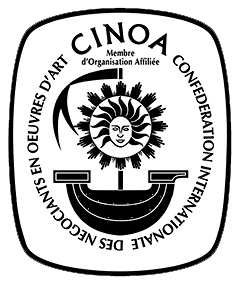German stoneware ‘Bartmann' jug with rose leaves and rosettes
Global shipping available
- Origin
- Germany, Cologne, Maximinenstrasse workshop
- Period
- First quarter of the 16th century
- Material
- Stoneware
- Height
- 13 cm
- Diameter
- 10.5 cm
- Literature
A. Bruijn & J.G.N. Renaud, In kannen en kruiken: Nederlands gebruiksaardewerk van de 11e tot de 16e eeuw, Rotterdam 1963.
C. van Hees, Baardmannen en puntneuzen. Vorm, gebruik en betekenis van gezichtskruiken 1500-1700, Zwolle 2002.
H. Hellebrandt & O. Eugen Mayer, Raerener Steinzeug; 15 Jahre Grabungen im Raerener Land, Aken 1967, pp. 9-29.W.F. Renaud & H.J.E. van Beuningen, Verdraaid goed gedraaid: verzameling H.J.E. van Beuningen, Rotterdam 1973, pp. 38-43.
J.G. Hurst, D.S. Neal, H.J.E. van Beuningen & A. Clark, Pottery produced and traded in north-west Europe 1350-1650, Rotterdam Papers VI, A contribution to medieval archeology, Rotterdam 1986, pp. 208-221.
E. Klinge, Duits steengoed, Rijksmuseum Amsterdam, Zwolle 1996, pp. 10-23, 44-57.
G. Reineking-von Bock, Steinzeug, Kataloge des Kunstgewerbemuseums Köln; vol. 4, Keulen 1986, pp. 225-257.
K. Strauss & F. Aichele, Steinzeug / Battenberg Antiquitäten-Kataloge, Battenberg 1980, pp. 50-59.
I. Unger, Die Kunst des deutschen Steinzeugs: Collection Karl und Petra Amendt und der Krefelder Kunstmuseen, Krefeld 2013, pp. 34-65.- Provenance
Collection E. Van Drecht
Collection B. Overduin, Bloemendaal/ Spain
Questions about this object?
Please use one of the contact options below:
Description
This Bartmann-type jug, with its characteristically grey body covered in a light brown slip, is made in Cologne, Germany, probably Maximinenstrasse workshop, in the first quarter of the sixteenth century. The neck is moulded with the characteristic bearded mask, the body is finely decorated in relief with branches with rose leaves and rosettes. The high quality of the glaze and excellently execution of the decorations on the bartmann jug point towards a provenance from a Maximinenstrasse workshop. Immigrant potters from nearby regions established factories principally on the Maximinenstrasse, which is why that area of Cologne housed one of the major stove-tile and stoneware production sites in the city during the sixteenth century.







